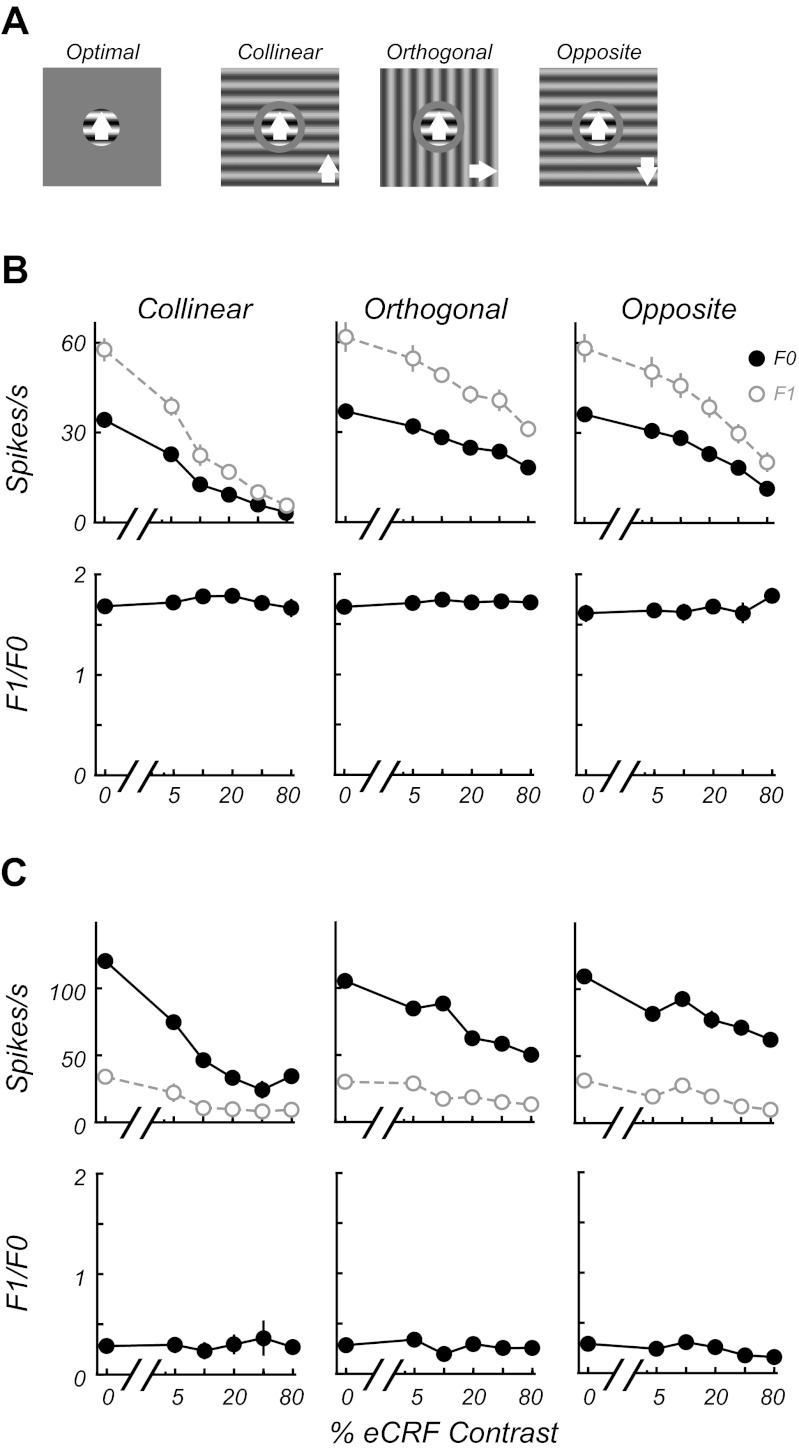Fig. 9.
Stimuli in the eCRF do not change the F1/F0 ratio. A: stimulus conditions for contextual experiments. Responses to an optimal grating confined to the CRF were compared with responses with stimuli presented simultaneously in the eCRF at collinear, orthogonal, and opposite directions of drift (indicated by white arrows) to the CRF grating. B and C: the response to an optimal stimulus in the CRF is modulated by different contextual stimulus configurations and contrasts in the eCRF for a simple (B) and a complex cell (C). The unmodulated F0 (filled black circles) and modulated F1 (open gray circles) components of the response are shown in each top graph (means ± SE, error bars are often obscured by the data points). For each condition the contrast of the stimulus in the eCRF was varied. The 0% contrast condition is the response to the stimulus in the CRF alone (A, optimal). The bottom graphs show that modulation (F1/F0) ratios for each condition remain invariant to manipulations of eCRF contrast and orientation that induce strong suppression.

